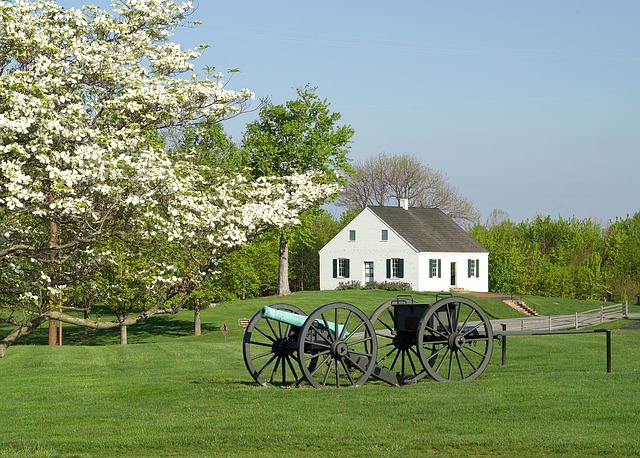The bloodiest conflict of the Civil War took place one hundred and fifty eight years ago this past Thursday. On September 17, 1862, the battle now known as Antietam or Sharpsburg was fought less than 75 miles from Woodstock. Nearly 23,000 casualties were suffered that day with over 3600 deaths.
Anyone that has visited this hallowed ground will remember that there is a little white Dunker Church sitting on the battlefield. This building became a rallying point and was used as a field hospital where amputations and surgeries were performed on the Elders’ Table.

On that late summer day, soldiers of both blue and grey were being killed or wounded at the rate of one per second all around this now iconic structure. It is truly ironic that this house of worship for peaceful non-violent Brethren found itself smack dab in the middle of what is still the deadliest day in US military history.
Since those dark days, this Brethren meeting house has collapsed and been rebuilt but what many do not know is the story of its Bible. Corporal Nathan Dykeman of the 107th New York Infantry Regiment visited the building eleven days after the fighting and stole the Bible as a souvenir spoil of war. His friend carried it to Dykeman’s home in Millport, NY where it remained for the next 41 years.
After participating in a victory parade in Washington DC nearly three years later, Dykeman was struck by a train and killed near Bladensburg, MD. The Bible remained at his home in New York apparently stashed away and forgotten.
In 1903 Dykeman’s sister had found the Bible and brought it to a Civil War reunion in Elmira requesting that it be returned. The veterans were happy to do so but weren’t sure how to make it happen. Someone remembered, however, that a Dunker lived nearby that might assist with this mission.
John Lewis was a black man who had worked for Mark Twain’s family in the area. In fact, he had saved the lives of Twain’s sister-in-law, niece, and friend when he risked his own life to stop their runaway horse and carriage. Lewis had earlier been baptized into the German Baptist Brethren (Dunkers) at Westminster, MD years before and moved north to avoid the war.
After being photographed with the Bible, Lewis shipped it to Elder John Otto of the congregation and the leather bound Scriptures arrived safely home in December of 1903 in time for the Christmas celebration. The Bible remains on display at the Antietam Battlefield Visitor Center and is often used for the annual Brethren commemorative worship service held at the rebuilt church near the date of the battle.
Before Lewis died, he penned his own obituary, a portion of which reads, “…I recognize none as true Christians who refuse to teach the whole Gospel.” I wonder how many he would so recognize today.
The incredible story of this Bible’s removal and eventual return is a prime illustration that it’s never too late to do the right thing. If you have stolen something in the past or hurt another in some way and it is in your power to either return an item or make restitution, please do so. In this case, it wasn’t even the man himself, but his sister that was convicted and convinced the Bible should be returned. When someone follows Jesus, we should always endeavor to do the right thing, even if it’s difficult or costly.
As the date of this historic battle passes once again, let us never forget the carnage that occurred and the suffering of those involved. And let the return of this Bible remind us to do the right thing whenever we have the opportunity.
Blessings, George
(I am indebted to Alan Schmidt and Terry Barkley for their research on this as recorded in their book, September Mourn, available on Amazon.)